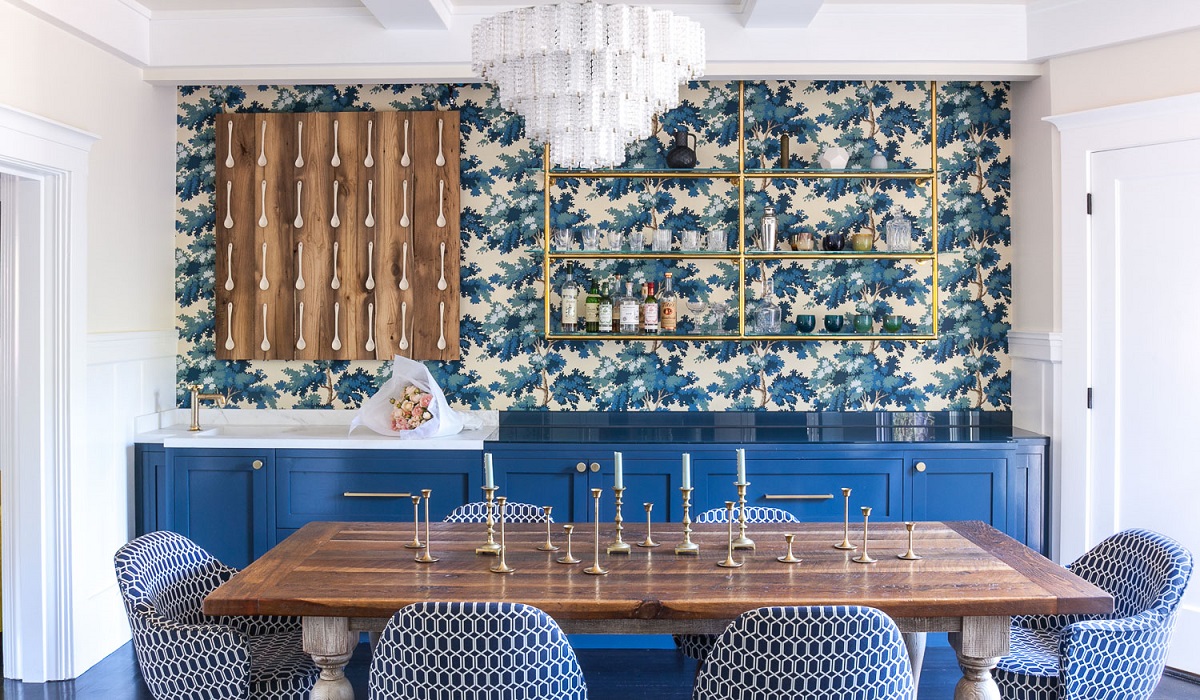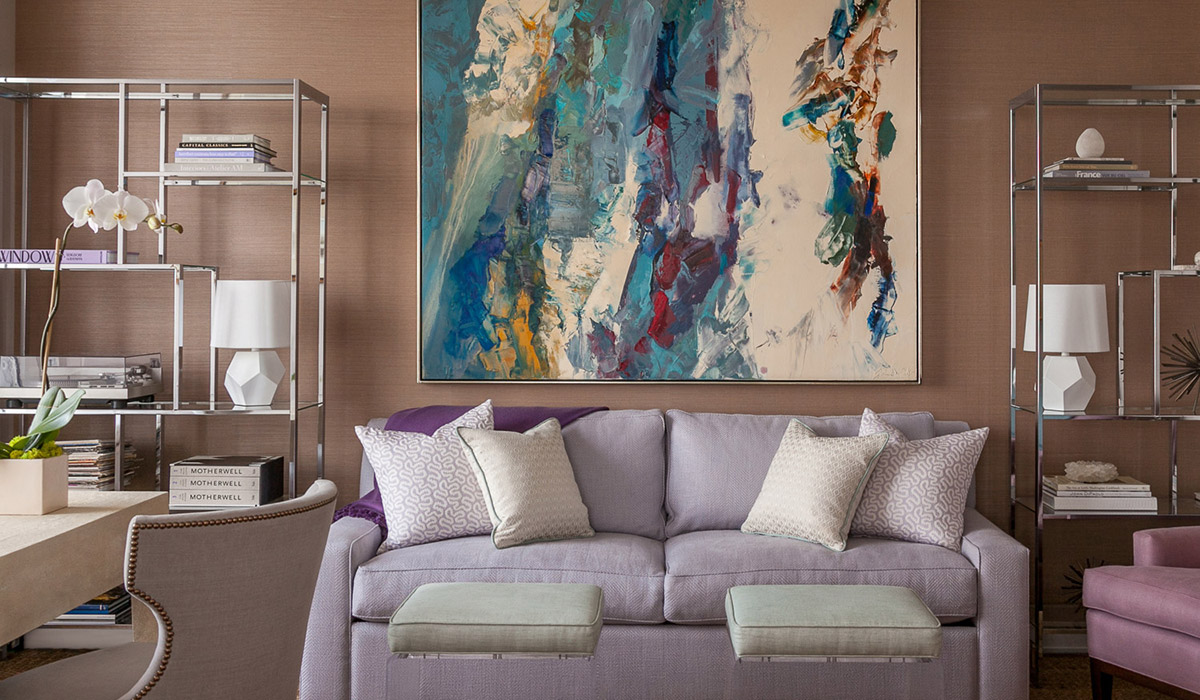
Grant K. Gibson has been designing homes for more than 15 years. Originally from Los Angeles, the 39-year-old designer, who’s now based in San Francisco, takes pride in creating living spaces that speak to the personality, preferences and experiences of his clients. Now, he’s releasing his first book, The Curated Home, which takes readers inside his design process and educates them on how to develop a timeless and curated interior that’ll fulfill their aesthetic tastes for years to come. “It’s not only about practical tips — how to display objects from travels, what to look for when making furniture purchases and the type of paints that work best in a particular room — but also how to think like an interior designer,” Gibson writes in the book’s introduction.
Below, Gibson shares some advice on where to start when tackling design projects. So whether you’re furnishing a new home, updating your kitchen or just want some inspiration to refresh your rental, here are his six top tips for “tweaking your décor.”

1. Determine Your Style
How do you want a space to feel? Here’s a trick to help you hone in on your style: take a look at your closet. Do you prefer tailored pieces or do you prefer looser and more comfortable items? Do you gravitate toward certain colors or patterns? Another way to help you determine your style is to think of key words that define how you want a space to feel. Traditional, formal, elegant? Playful, humorous, inviting? Monochromatic, streamlined, modern?
Take note of design inspirations in every facet of life. I often use these as a starting point to discuss with clients when I’m hired to help them design the interiors of their homes. Recall a hotel in which you’ve stayed or restaurant in which you’ve dined that particularly struck your fancy. Perhaps it was a minimal interior from your trip to Japan or a clubby bar in New York furnished with worn leather chairs.
2. Figure Out What You Don’t Like
It is a lot easier for people to express what they do not like. By putting dislikes into the equation, we can eliminate some things and narrow in on others. For example, a bold large-scale print might remind you of something in your childhood that you do not want to see in your own space. Or a wingback chair might bring back memories of being sent to time-outs for pulling your sister’s hair. Likewise, a certain color might evoke feelings of a past design trend that you aren’t eager to repeat. These memories and reactions are very personal and individual, but also define our tastes.
3. Build Around Your Space

Space planning, which impacts scale, is essential. People often use furniture that is too large or too small for a space. I like to blame a certain retail company for the large-scale furnishings that saturate interiors today. Build around the furniture that you actually have space for. Think about the balance of a space. For larger rooms, consider establishing zones for different activities: a seating area that is conducive to conversation; another area for television viewing; a work area with a desk or table for projects or games. Even though I love symmetry, you can make things feel too contrived when you make everything symmetrical. Think about the visual weight and distribution to balance out a space. Proportion and scale are key to any design.
4. Sample Your Paint
Paint selection is one of the most important and cost-effective decisions you can make. Proper paint choices harmoniously connect spaces. Consider the house as a whole. You risk creating disjointed rooms if you paint one room at time. Take into account how colors affect our mood. Some colors make people feel happy, calm or even agitated. I have been known to paint interior doors a bold black for a contrast against crisp white walls.
Sample actual paint colors on your walls when looking at options. Observe them in natural light, morning light and at night. Often a go-to color that worked well for one project will not work for another. What might work at your friend’s home might not work at your home. The chips at the paint store are a helpful starting point, but what looks good on paper might not translate into your interior. With white paints, try a handful of different hues on the wall and pay special attention to the undertones. They can have touches of pinks, blues or yellows. The outside surroundings strongly affect the temperature of the light. The vegetation and the sky can create reflections of greens and blues on your interior walls.
5. Mix High and Low Price Points
Pedigree doesn’t necessarily mean better (whether it be art, furniture or dogs). Consider an “unknown” artist or designer and buy based on shape, comfort and how the art or furniture works for you and your needs. The most humble objects can have the most soul and be the most beautiful thing in a room. Do not be afraid to mix high and low price points. Not everything must be precious to be important. The opposite can be said with splurging on something that you really love.

6. Start From the Ground Up
Design can be overwhelming. People often want to know where exactly to start. For any room, I usually suggest that you begin from the ground up: Decide on the floor covering. It doesn’t matter if you want or have hardwood floors, area rugs, tile, stone or wall-to-wall carpeting. Thinking about your floor first will dictate how other pieces are layered in the space. If you select a neutral tone or natural fiber without a lot of pattern or color, you have more options with colors or upholstery. If you start with an antique rug, you can draw colors from the rug to formulate a color palette. It is important to plan these things in tandem, otherwise you end up with the circus effect: too many things going on without the space as a whole functioning in unison. Starting with a sofa or upholstered chairs limits your style immediately. There is more flexibility with something like an area rug with dozens or even hundreds of possibilities. This is where you have options and can then start to layer pieces. It is a much easier approach to make your final floor covering decision first, and then layer.
Last, but not least, Gibson advises that people take their time when designing their homes. “When taken care of, these items [and decisions] can last for years,” Gibson advises.
Excerpted from The Curated Home (Gibbs Smith 2018).
More Must-Reads From TIME
- The 100 Most Influential People of 2024
- Coco Gauff Is Playing for Herself Now
- Scenes From Pro-Palestinian Encampments Across U.S. Universities
- 6 Compliments That Land Every Time
- If You're Dating Right Now , You're Brave: Column
- The AI That Could Heal a Divided Internet
- Fallout Is a Brilliant Model for the Future of Video Game Adaptations
- Want Weekly Recs on What to Watch, Read, and More? Sign Up for Worth Your Time
Contact us at letters@time.com